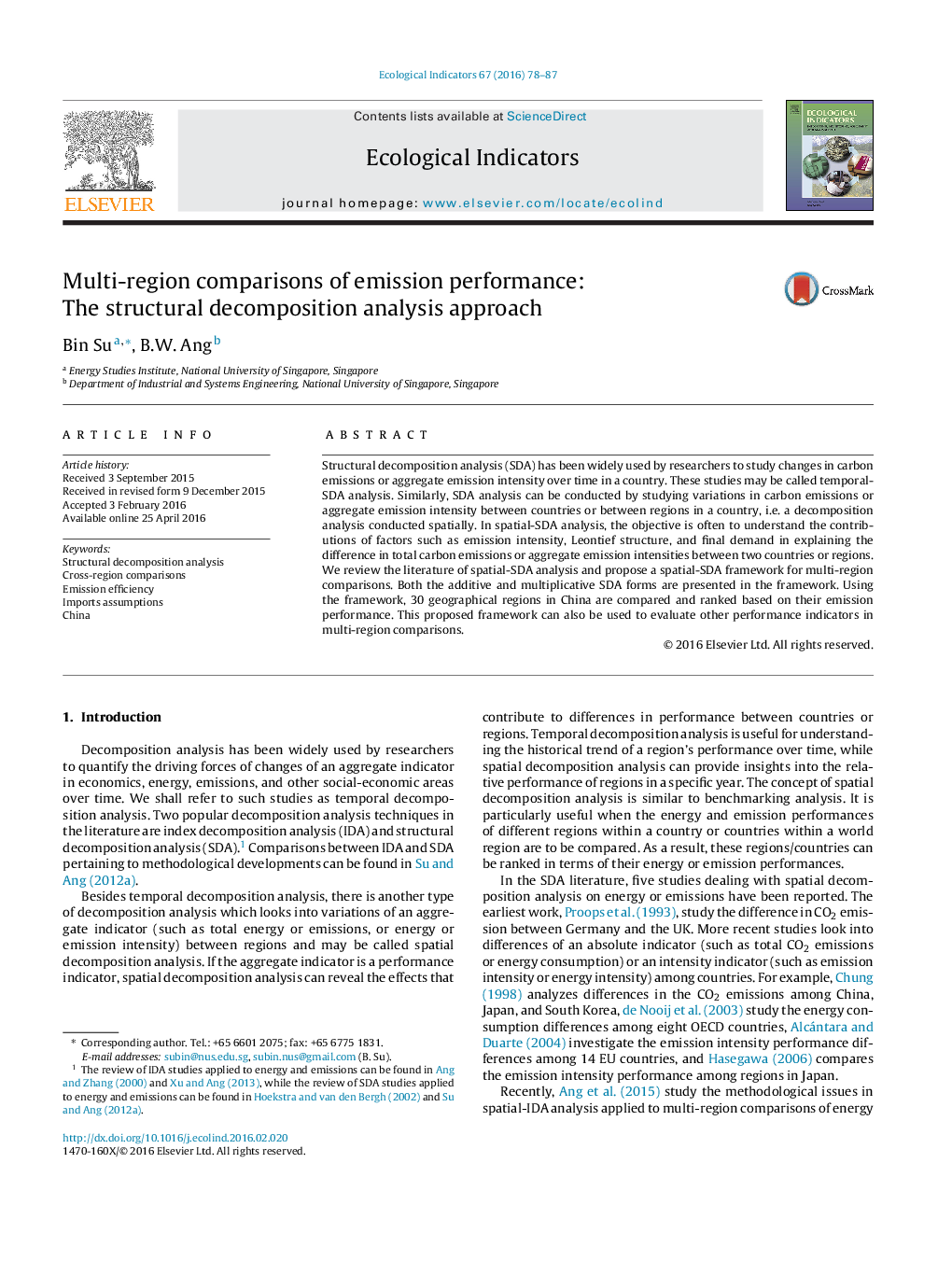| Article ID | Journal | Published Year | Pages | File Type |
|---|---|---|---|---|
| 4372856 | Ecological Indicators | 2016 | 10 Pages |
•We propose a spatial-SDA framework for multi-region comparisons.•Both additive and multiplicative SDA forms are covered in the proposed framework.•Four Leontief I–O models are formulated for spatial-SDA of emission performance.•The emission performance index (EmPI) can be constructed for pair comparisons.•Features of the new framework are illustrated using the data of 30 regions in China.
Structural decomposition analysis (SDA) has been widely used by researchers to study changes in carbon emissions or aggregate emission intensity over time in a country. These studies may be called temporal-SDA analysis. Similarly, SDA analysis can be conducted by studying variations in carbon emissions or aggregate emission intensity between countries or between regions in a country, i.e. a decomposition analysis conducted spatially. In spatial-SDA analysis, the objective is often to understand the contributions of factors such as emission intensity, Leontief structure, and final demand in explaining the difference in total carbon emissions or aggregate emission intensities between two countries or regions. We review the literature of spatial-SDA analysis and propose a spatial-SDA framework for multi-region comparisons. Both the additive and multiplicative SDA forms are presented in the framework. Using the framework, 30 geographical regions in China are compared and ranked based on their emission performance. This proposed framework can also be used to evaluate other performance indicators in multi-region comparisons.
